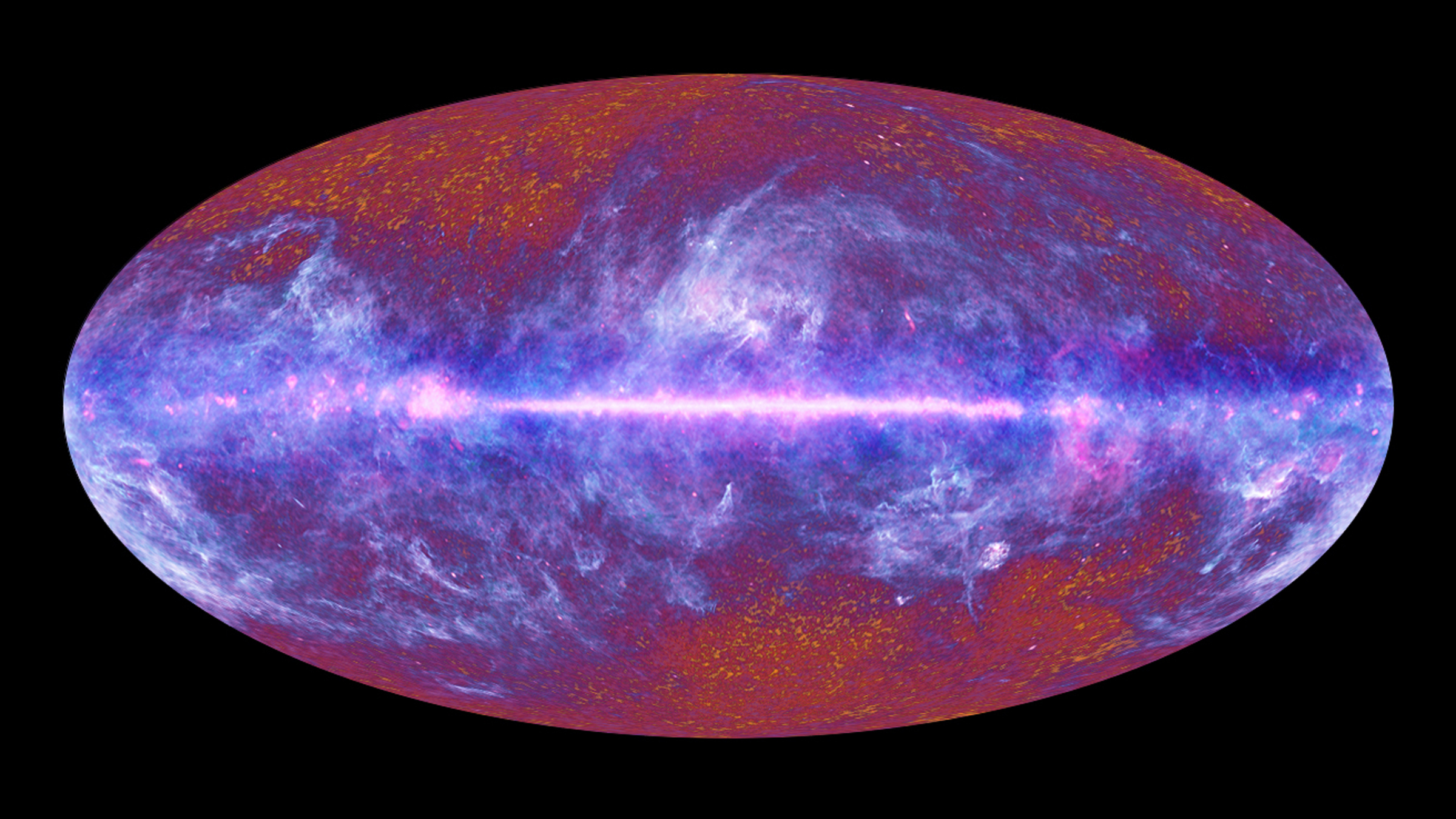The universe might be shaped like a doughnut, not like a pancake, new research suggests
The universe may be flat, but could still be shaped like a doughnut, weird patterns in leftover light from the Big Bang suggest.

The universe could, in fact, be a giant doughnut, despite all of the evidence suggesting it's as flat as a pancake, new research suggests.
Strange patterns found in echoes of the Big Bang could be explained by a universe with a more complicated shape, and astronomers have not fully tested the universe's flatness, the study finds.
Related: What shape is the universe?
Flat surfaces
All observations so far suggest the universe is flat. In geometry, "flatness" refers to the behavior of parallel lines as they go out to infinity. Think of a tabletop: Lines that start out parallel will remain that way as they extend along the table length.
In contrast, look at Earth. Lines of longitude begin perfectly parallel to each other at the equator but eventually converge at the poles. The fact that parallel lines initially intersect reveals that Earth is not flat.
The same logic applies to the 3D universe. For instance, the cosmic microwave background (CMB) — light released when the cosmos was only 380,000 years old — now sits over 42 billion light-years away and features tiny fluctuations in temperature across the sky. Astronomers have calculated the predicted size of those fluctuations compared with observations. If their measured size differs from predictions, that means those rays of light, which started out parallel, changed directions over space-time, indicating that the geometry of the universe is curved.
But those same measurements have revealed that, ignoring small-scale deflections from galaxies and black holes, the overall geometry of the universe is flat.
Get the world’s most fascinating discoveries delivered straight to your inbox.
Different types of flat
But there's more than one kind of flat. For example, draw parallel lines on a piece of paper. Then wrap one end of the paper to connect with the other, forming a cylinder. The lines remain parallel as they circle the cylinder. In the language of mathematics, any cylinder is geometrically flat but is said to have a different topology. Close up both sides of the paper, and you make a torus, or doughnut shape.
To get another example of a weirdly flat shape, wrap a thin strip of paper in a circle, but make a 180-degree twist in one end. The end result is a Möbius strip, which is still geometrically flat, because parallel lines stay parallel, even when they flip over each other.
Mathematicians have discovered 18 possible geometrically flat, 3D topologies. In each one, at least one dimension wraps up on itself, and sometimes, they flip over like a Möbius strip or make partial rotations. In such a twisty universe, if we looked far away, we would see a (maybe upside-down) copy of ourselves from a much younger age. For example, if the universe were 1 billion light-years across, astronomers would see a version of the Milky Way galaxy as it was 1 billion years ago and, behind that, another copy from 2 billion years ago, and so on.
If the universe were a giant doughnut, astronomers could look in two directions to see such copies.
The universe's shape
Astronomers have measured the topology of the universe in multiple ways, from looking for duplicates of patterns of galaxies to matching circles in the CMB. All evidence suggests the universe is both geometrically flat and has a simple unwrapped topology.
But a paper published Feb. 23 to the preprint database arXiv suggests that past measurements have been limited. Most notably, observations have assumed that the universe wraps around itself in only one dimension and does not have a more complicated topology. Also, observations of the CMB have revealed some strange, unexplained anomalies, like large patterns appearing where they shouldn't.
In fact, a universe with a complicated topology could explain at least some of the anomalies in the CMB. While this isn't an iron-clad case for complicated topologies, the researchers offered ideas for more sophisticated direct searches, like follow-up studies of the CMB.
In that case, there may be a mirror image of us somewhere in our twisty universe.

Paul M. Sutter is a research professor in astrophysics at SUNY Stony Brook University and the Flatiron Institute in New York City. He regularly appears on TV and podcasts, including "Ask a Spaceman." He is the author of two books, "Your Place in the Universe" and "How to Die in Space," and is a regular contributor to Space.com, Live Science, and more. Paul received his PhD in Physics from the University of Illinois at Urbana-Champaign in 2011, and spent three years at the Paris Institute of Astrophysics, followed by a research fellowship in Trieste, Italy.


